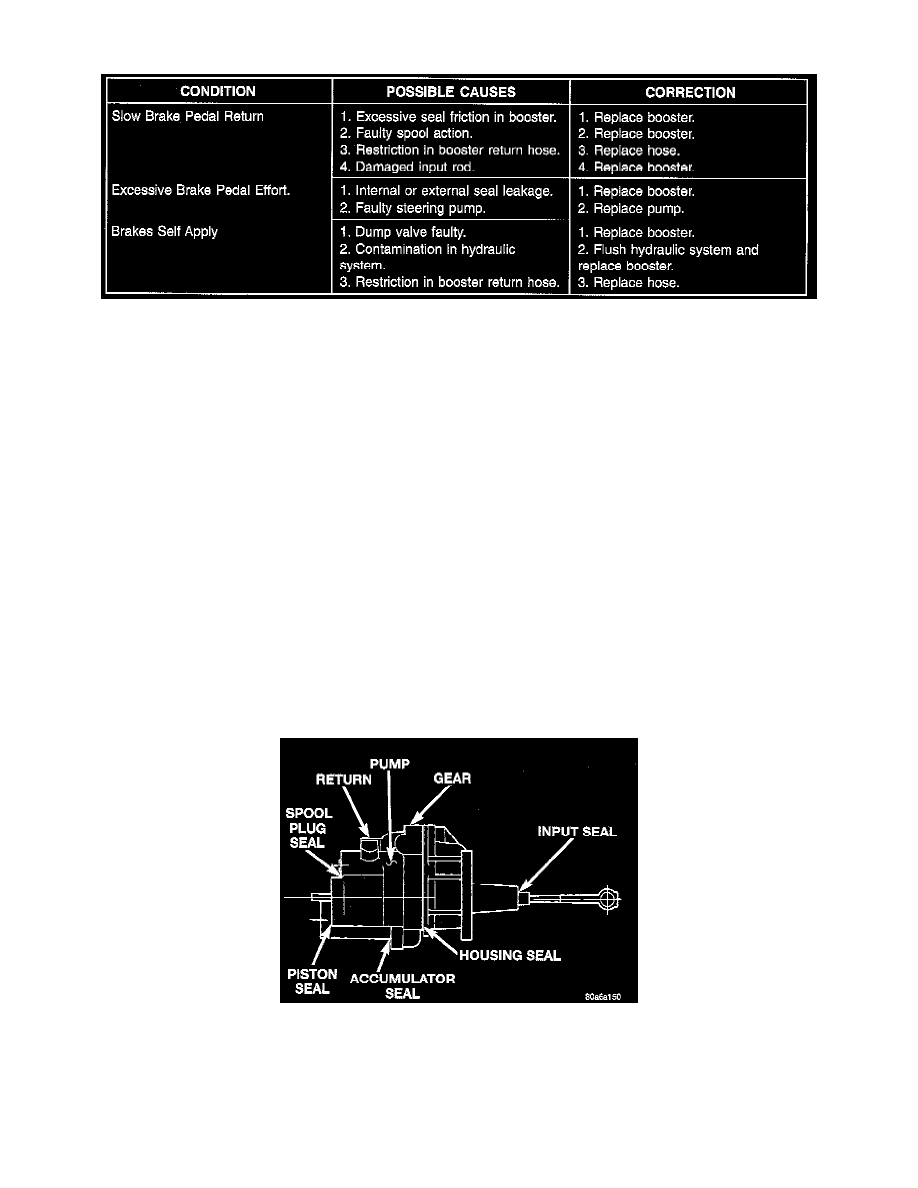RAM 2500 Truck 2WD L6-359 5.9L DSL Turbo VIN D FI (1997)

Hydraulic Brake Booster: Testing and Inspection
Hydraulic Booster System Diagnosis Chart
PRELIMINARY CHECKS
The hydraulic booster uses hydraulic pressure from the power steering pump. Before diagnosing a booster problem, first verify the power steering
pump is operating properly. Perform the following checks.
^
Check the power steering fluid level.
^
Check the brake fluid level.
^
Check all power steering hoses and lines for leaks and restrictions.
^
Check power steering pump pressure.
Noises
The hydraulic booster unit will produce certain characteristic booster noises. The noises may occur when the brake pedal is used in a manner not
associated with normal braking or driving habits.
Hissing
A hissing noise may be noticed when above normal brake pedal pressure is applied, 40 lbs. or above. The noise will be more noticeable if the
vehicle is not moving. The noise will increase with the brake pedal pressure and an increase of system operating temperature.
Clunk-Chatter-Clicking
A clunk-chatter-clicking may be noticed when the brake pedal is released quickly, after above normal brake pedal pressure is applied 50-100 lbs..
BOOSTER OPERATION
With the engine off depress the brake pedal several times to discharge the accumulator. Then depress the brake pedal using 40 lbs. of force and
start the engine. The brake pedal will fall and then push back against your foot.
Hydraulic Booster Seals
SEAL LEAKAGE
If the booster leaks from any of the seals the complete unit must be replaced.
^
INPUT ROD SEAL: Fluid leakage from rear end of the booster.
^
PISTON SEAL: Fluid leakage from vent at front of booster.
^
HOUSING SEAL: Fluid leakage between housing and housing cover.
